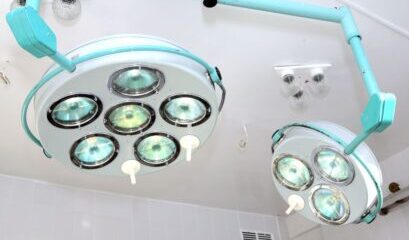I-MED Radiology sale looms as Healius moves forward, buyers must justify asking price
Our analysts pick out hints of future material developments in M&A and ECM situations to produce an exclusive report that offers short and long-term actionable ideas (no investment action should be taken without further investigation). If you have ideas for coverage, please email [email protected].
Fueled by Australia’s aging population and government initiatives to enhance healthcare infrastructure, M&A in the diagnostic imaging space has been heating up. As Healius [ASX:HLS] moves to an advanced stage in the sale of its AUD 700m diagnostic imaging division Lumus Imaging, certain questions arise, such as when a sale process for the country’s largest player I-MED Radiology Network will officially kick off, how much the transaction will be worth, and what kind of buyers will participate.
In July, Permira, the UK-based private equity owner of I-MED was reported to be in the process of preparing to launch an auction process in September.
Whilst multiple sources have pointed to I-MED as a second-half process, this news service has not heard when exactly a formal process will commence. That said, a possible sale could be ramping up as I-MED reported in August that it was attracting serious interest from big PE names. Speculation of a sale by Permira surfaced back in mid 2021, but did not progress much until January when AFR reported that the sponsor was preparing for an auction, looking to attract core-plus and infrastructure investors.
As the deadline for submitting binding offers to acquire Lumus Imaging is believed to be mid-September, it is reasonable to anticipate that I-MED’s process will come after a preferred buyer for Lumus is nearly finalized.
Permira is said to be seeking around AUD 4bn (USD 2.7bn) for the largest radiology business in Australia which generated AUD 1.35bn in revenue and AUD 230m in EBITDA for the year ending 30 June 2024.
In January 2018, Permira acquired I-MED from Swedish PE firm EQT for AUD 1.25bn (USD 1.01bn), or at 12.5x EV/EBITDA.
Assuming the AUD 4bn price tag is referring to the enterprise value, the Flash estimates an exit would imply an exit multiple of above 17x EV/EBITDA and a near 3.0x EV/Revenue. The exit multiple would be well above precedent M&As in the diagnostic imaging space and trading multiples of listed players.
Peers including Sonic Healthcare [ASX:SHL], Integral Diagnostics [ASX:IDX], Healius, and Capitol Health [ASX:CAJ] are trading at a median multiple of 9.6x EV/EBITDA and 1.9x EV/Revenue.
The top range valuation is plausible considering I-MED’s leading position with 25% market share in the country’s diagnostic imaging space. Sonic Health is the number two player generating FY24 revenue of AUD 880m (10% group revenue) and FY24 EBITDA of AUD 217.5m (13.3% group EBITDA) in the radiology segment.
Recent M&As in the radiology space may provide some valuation insight on a potential I-MED sale.
Including Healius, three out of the above top six radiology companies are going through an M&A process. The proposed merger of Integral and Capitol announced in June was done at 8.4x EV/FY24 EBITDA or 10.0x FY25 forecasted EBITDA pre-synergies.
Healius’ Lumus Imaging may fetch between 10-12x FY25 forecasted EBITDA, implying a price tag of AUD 590m -710m, according to AFR citing Macquarie research analysts. Lumus recorded revenue of AUD 519m (USD 345.5m) and EBITDA of AUD 97.3m (USD 64.8m) in FY24, according to Healius’ FY24 earnings report.
With I-MED’s scale and diagnostics footprint, a top range valuation multiple of 17x EV/EBITDA above precedents and listed peers is not outside the realm of possibilities. But uncertainty on valuation lies on I-MED’s fast-growing teleradiology business and the AI business Annalise.ai which utilizes AI to read scans and generate reports.
A banker source told the Flash that the teleradiology business has always been a question mark, for which I-MED has been trying to demonstrate that it can be a standalone business as it services external clients. I-MED’s existing teleradiology operations, I-TeleRAD, has a footprint in Australia and in the US, representing around 10% of its revenue. I-MED recently acquired San Diego-based StatRad, the 2nd largest teleradiology service provider to enter the US market.
Valuations for teleradiology and AI busineses is hard to determine, especially when there’s a persistent specialist shortage at home and abroad. The pluses of improved efficiency and cost reduction have yet to be fully quantified.
A second industry banker noted that I-MED’s recent teleradiology acquisition in the US is part of a “ticking all the boxes internally” exercise prior to the sale. There is not much I-MED can do in Australia in terms of acquisitions, since the market is already consolidated with I-MED being the largest player, both bankers said.
Potential buyers: infra-fund vs private equity?
The pool of interested buyers and deal activity in the diagnostic imaging space suggest a sale is likely to proceed.
Given I-MED’s size, there are not many trade buyers with pockets deep enough to buy, the first banker source said, adding that the vendor’s preference is understood to be an infrastructure investor that will pay the highest price.
As Infratil CEO Jason Boyes said when acquiring New Zealand’s Pacific Radiology Group, “Diagnostic imaging is an essential services industry, offering a combination of defensive characteristics and structural long-term growth”. This may well serve as an idea portfolio for infra fund.
However, the banker source also said the business is just so big that interested parties may need to form consortium to bid, adding that global PE firms will definitely participate.
I-MED is said to have attracted serious interest from Bain Capital’s infrastructure unit and Morgan Stanley Infrastructure Partners in February. Potential buyers include Partners Group‘s infrastructure unit, The Carlyle Group, Wesfarmers [ASX:WES], and Macquarie’s infrastructure operation Macquarie Asset Management. There are also a limited number of global trade players, with Swiss giant Unilabs among them, reported to be interested.
One potential risk for stakeholders of I-MED is found in its ownership structure – specifically, ownership held by doctors. The size of the doctors’ stake in I-MED is unknown. In July 2021, Permira was reported to have offered radiologists a chance to buy into I-MED. It is widely believed that privately owned radiology businesses have their ownership split between investors, management and radiologists, such as Qscan. The doctor stakeholders would likely want to remain involved in the business following a change of ownership.













